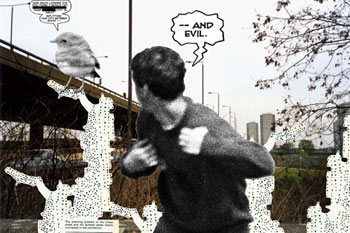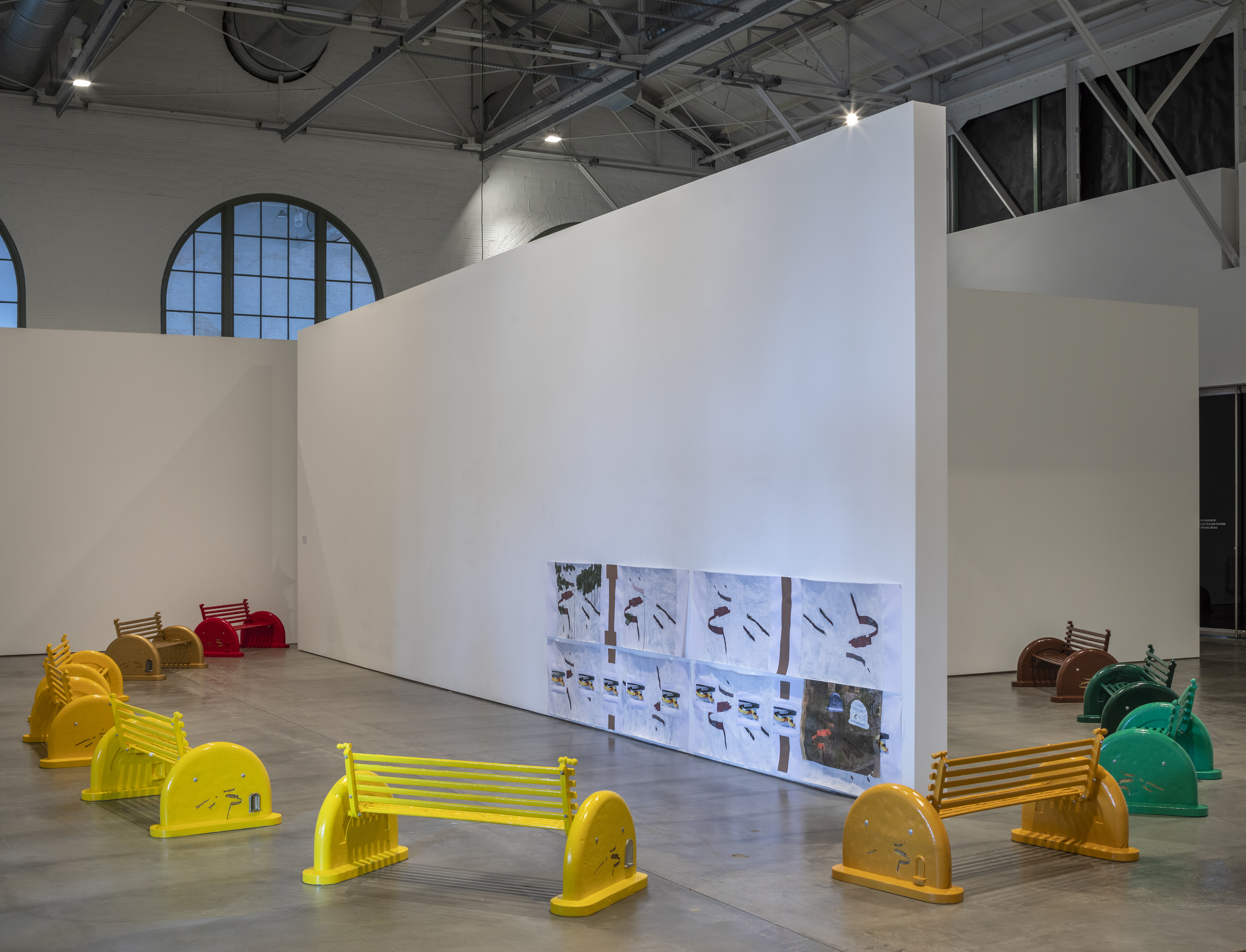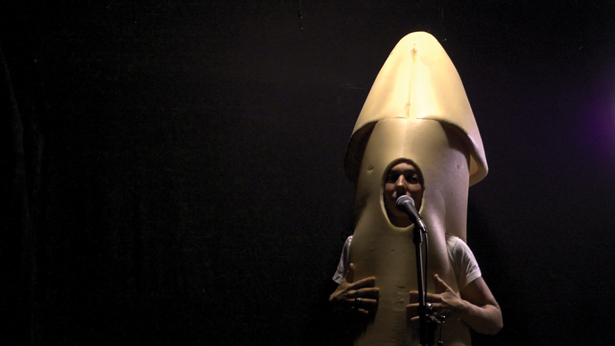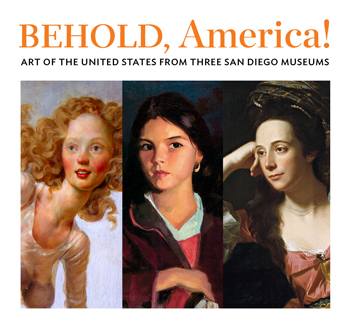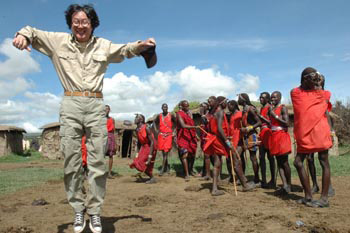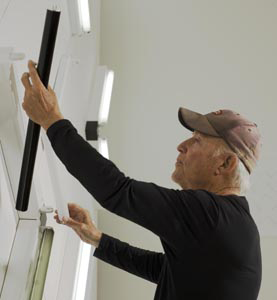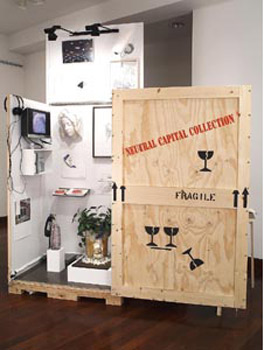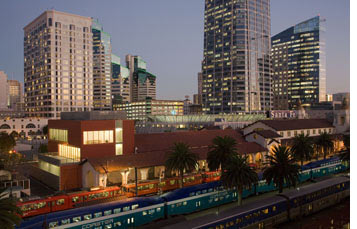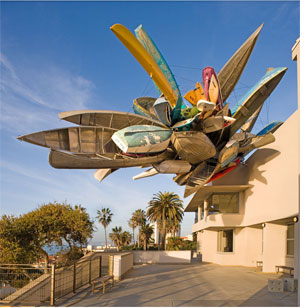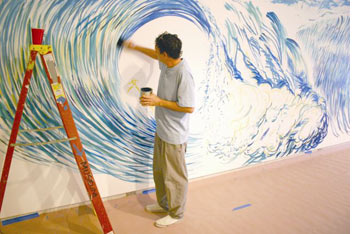Automatic Cities
The Architectural Imaginary in Contemporary Art
September 26, 2009 – January 31, 2010
700 Prospect Street
La Jolla, CA 92037
General Information:
(858) 454-3541
Automatic Cities explores the psychological, social, political, and metaphorical influences of architecture on contemporary visual art. The “architectural imaginary” in the exhibition title refers to architecture in the broadest sense, comprising images of sites and cities both built and unbuilt, rising from collective experience and imagination. Automatic Cities maps the architectural imaginary in an international context through work by thirteen artists (and one artist collective) hailing from eleven countries, setting projects by prominent artists in dialogue with that of emerging practitioners. Automatic Cities is curated by MCASD Curator Robin Clark.
Several themes recur throughout Automatic Cities, including the relationships of architecture to language, memory, and surveillance; architecture as a conceptual model is also a topic mined by many of the participating artists. Paul Noble’s drawings of a fictional city constructed from a typographical font, Matthew Buckingham’s installation inspired by the garret where Samuel Johnson penned the first English language dictionary, and Ann Lislegaard’s 3D animation based on J. G. Ballard’s novel The Crystal World all address relationships between architecture and language. Memory projected onto the architectural surround is the topic of videos by Hiraki Sawa and Saskia Olde Wolbers, while Rachel Whiteread’s sculptures and related drawings make material the idea of architecture as a locus of somatic memory.
A third theme, architecture as model, manifests in installations by Los Carpinteros, Catharina van Eetvelde, Matthew Ritchie, Katrín Sigurdardóttir, and Michaël Borremans. Los Carpinteros creates work that humorously and poignantly speaks to the failed utopian dreams of Cuba, while Sigurdardóttir’s installations use models to evoke the coastline and folklore of her native Iceland. Paintings and drawings by Borremans demonstrate the uncanny potential of architectural models, while embedded within Ritchie’s collapsed radio transmission tower is an inundated, three-dimensionally rendered city. Catharina van Eetvelde’s drawn animations of architectural elements morphing alternately into plant life, computer circuitry, and animal forms combine to create “a city with the metabolism of a hummingbird.”
The final section of the exhibition addresses questions of surveillance. Julie Mehretu’s layered paintings provide chaotic and polemic images of militarized urban surrounds. Sarah Oppenheimer’s installation, conceived as a “movie made with architecture,” consists of constructed portals that frame views, which in turn are animated by the movement of visitors, creating a mutual surveillance that has opportunities and losses for the viewer and the viewed. Jakob Kolding’s collages and posters critique the shortcomings of urban renewal while simultaneously embracing the cultural collisions made possible by the density of cities.
The fully illustrated catalogue features an essay and entries by Robin Clark as well as an essay by Giuliana Bruno, Professor at Harvard University and a critically acclaimed author on the topics of visual art and architecture. Bruno’s essay, entitled “Construction Sites: Fabricating the Architectural Imaginary in Art,” provides a nuanced theoretical and historical framework for understanding the concept of the architectural imaginary in art, drawing primarily from the fields of modern philosophy and sociology. Clark’s essay, which shares its title with the exhibition, traces the development of the concept of the architectural imaginary through 20th-century avant-garde movements, including Dada, Surrealism, and Situationism, before developing thematic considerations of contemporary production through the lenses of architecture and language, architecture as memory, architecture as model, and architecture as surveillance. The catalogue is available from D.A.P.
Automatic Cities is organized by the Museum of Contemporary Art San Diego. The exhibition and catalogue are made possible by a generous gift from David Guss; and grants from the National Endowment for the Arts, a Federal agency; the Graham Foundation for Advanced Studies in the Fine Arts; the Danish Arts Council; and the American-Scandinavian Foundation. The Nimoy Foundation generously funded the residency of Sarah Oppenheimer. Education programs are supported by the County of San Diego Community Enhancement Fund and the Institute of Museum and Library Services.
Related Programs
Art Talk: Ann Lislegaard
Saturday, November 14 – 2 PM
MCASD La Jolla
Artist Ann Lislegaard will discuss her work, which translates science-fiction novels into three-dimensional video animations.
UCSD/MCASD Russell Lecture Featuring Matthew Ritchie
Thursday, November 19 – 7 PM
MCASD La Jolla
Artist Matthew Ritchie will speak about his work, which engages vast bodies of knowledge with a multiplicity of media and approaches.
FILM: Line Shot
Thursday, December 10 – 7 PM
MCASD La Jolla
MCASD presents the West Coast premiere of Matthew Ritchie’s first feature-length film, Line Shot (2009). This digital animation weaves together exuberant utopian narratives and arcane creation myths, resulting in something Ritchie describes as “Fantasia for physicists.”
About MCASD
Founded in 1941, MCASD is the preeminent contemporary visual arts institution in San Diego County, with locations in downtown San Diego and La Jolla, and a collection of more than 4,000 works of art created since 1950.
Admission is free for ages 25 and under, and is generously supported by Qualcomm.
